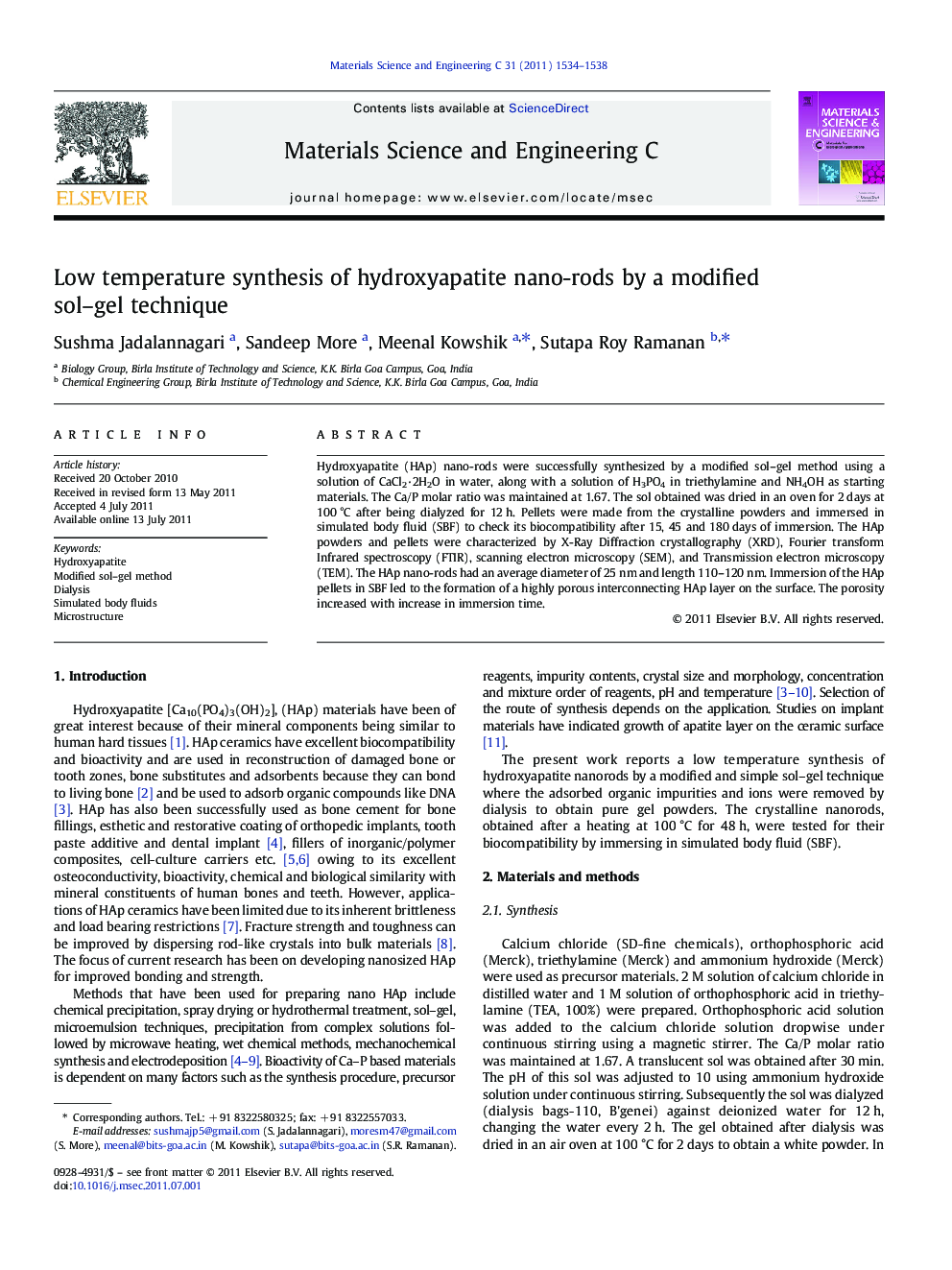| Article ID | Journal | Published Year | Pages | File Type |
|---|---|---|---|---|
| 1429744 | Materials Science and Engineering: C | 2011 | 5 Pages |
Hydroxyapatite (HAp) nano-rods were successfully synthesized by a modified sol–gel method using a solution of CaCl2·2H2O in water, along with a solution of H3PO4 in triethylamine and NH4OH as starting materials. The Ca/P molar ratio was maintained at 1.67. The sol obtained was dried in an oven for 2 days at 100 °C after being dialyzed for 12 h. Pellets were made from the crystalline powders and immersed in simulated body fluid (SBF) to check its biocompatibility after 15, 45 and 180 days of immersion. The HAp powders and pellets were characterized by X-Ray Diffraction crystallography (XRD), Fourier transform Infrared spectroscopy (FTIR), scanning electron microscopy (SEM), and Transmission electron microscopy (TEM). The HAp nano-rods had an average diameter of 25 nm and length 110–120 nm. Immersion of the HAp pellets in SBF led to the formation of a highly porous interconnecting HAp layer on the surface. The porosity increased with increase in immersion time.
► Low temperature synthesis of hydroxyapatite nanorods using Ca and P sources and triethylamine. ► The synthesis time was only 0.5 hours. ► Crystalline material was obtained after drying at 100oC only in air. ► SBF studies showed the HAP bodies to be biocompatible.
